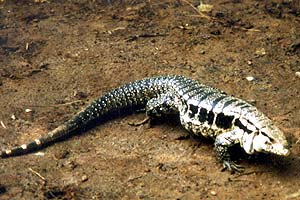-
Hello guest! Are you a Tegu enthusiast? If so, we invite you to join our community! Our site is specifically designed for you and it's a great place for Tegu enthusiasts to meet online. Once you join you'll be able to post messages, upload pictures of your Tegu and enclosure and have a great time with other Tegu fans. Sign up today! If you have any questions, problems, or other concerns email [email protected]!
You are using an out of date browser. It may not display this or other websites correctly.
You should upgrade or use an alternative browser.
You should upgrade or use an alternative browser.
Beautiful Tegu
- Thread starter dorton
- Start date
- Messages
- 332
I don't read or speak Portuguese, but speaking Spanish let me understand about 70% of what it said. Of interest was the range and flora in which the tegu lives and what it eats, according to whomever wrote that.
No jungle, more grass plains near shrubs and rocks to sun on. And they eat just about anything they can get their mouths on.
Very attractive tegu in any event.
No jungle, more grass plains near shrubs and rocks to sun on. And they eat just about anything they can get their mouths on.
Very attractive tegu in any event.
- Messages
- 3,684
Yes it is!! There are many pictures of wild tegus that look much different then the ones we have in the pet trade. I wish there was a way to bring some of these awesome looking animals in.
ilovelizards
New Member
- Messages
- 163
The artical with this picture google tranlated
Daniela Gerdenits, a biologist from the São Paulo Zoo
Photo: Gloria Jafet / SP Zoo
The tegu lizard is most common in captivity
Common name: tegu
Scientific Name: Tupinambis merianae
Geographical distribution: It is found in Brazil, except in the Amazon Forest
Natural Habitat: Mainly open areas of savannah, but may be seen in the forest edges-of-gallery and into more open woods. It is a species that lives on the floor, next to low grasses and stones, where sunbathing.
Feeding habits: In captivity, they feed on egg yolks, meat, mice, chicks, frogs, fruits and vegetables. In nature, beyond these items, also feeds on molluscs, arthropods, and even carrion.
Size: Can reach up to 1.4 m in length. Males are larger than females.
Reproduction: The reproduction apparently occurs in the period from October to December, laying 13-30 eggs which are incubated for a period of 90 days.
Learn more:
The tegu belongs to the family Teiidae, the class of reptiles.
It is the most common lizard in captivity.
Socialize with areas where humans live, including the major cities, near the abandoned land. Sometimes invades chicken to eat eggs and chicks.
Its general color is black or white with yellow spots on the head and limbs. Puppies are greenish.
Is a diurnal, spending much time in looking for movement arrested. He usually finds its prey with the help of your tongue long and forked, or divided into two parts.
The average temperature is the body of tegu 35 ° C. Being a cold-blooded animal, usually in the winter to take refuge in burrows in the ground and under stones, in both nature and in captivity. He does this to try to keep your body temperature, since it has a stable temperature, as humans, and can lose heat to the environment.
When it feels threatened, can stand still and try to camouflage themselves among the environment or run away quickly, making too much noise.
Daniela Gerdenits, a biologist from the São Paulo Zoo
Photo: Gloria Jafet / SP Zoo
The tegu lizard is most common in captivity
Common name: tegu
Scientific Name: Tupinambis merianae
Geographical distribution: It is found in Brazil, except in the Amazon Forest
Natural Habitat: Mainly open areas of savannah, but may be seen in the forest edges-of-gallery and into more open woods. It is a species that lives on the floor, next to low grasses and stones, where sunbathing.
Feeding habits: In captivity, they feed on egg yolks, meat, mice, chicks, frogs, fruits and vegetables. In nature, beyond these items, also feeds on molluscs, arthropods, and even carrion.
Size: Can reach up to 1.4 m in length. Males are larger than females.
Reproduction: The reproduction apparently occurs in the period from October to December, laying 13-30 eggs which are incubated for a period of 90 days.
Learn more:
The tegu belongs to the family Teiidae, the class of reptiles.
It is the most common lizard in captivity.
Socialize with areas where humans live, including the major cities, near the abandoned land. Sometimes invades chicken to eat eggs and chicks.
Its general color is black or white with yellow spots on the head and limbs. Puppies are greenish.
Is a diurnal, spending much time in looking for movement arrested. He usually finds its prey with the help of your tongue long and forked, or divided into two parts.
The average temperature is the body of tegu 35 ° C. Being a cold-blooded animal, usually in the winter to take refuge in burrows in the ground and under stones, in both nature and in captivity. He does this to try to keep your body temperature, since it has a stable temperature, as humans, and can lose heat to the environment.
When it feels threatened, can stand still and try to camouflage themselves among the environment or run away quickly, making too much noise.
